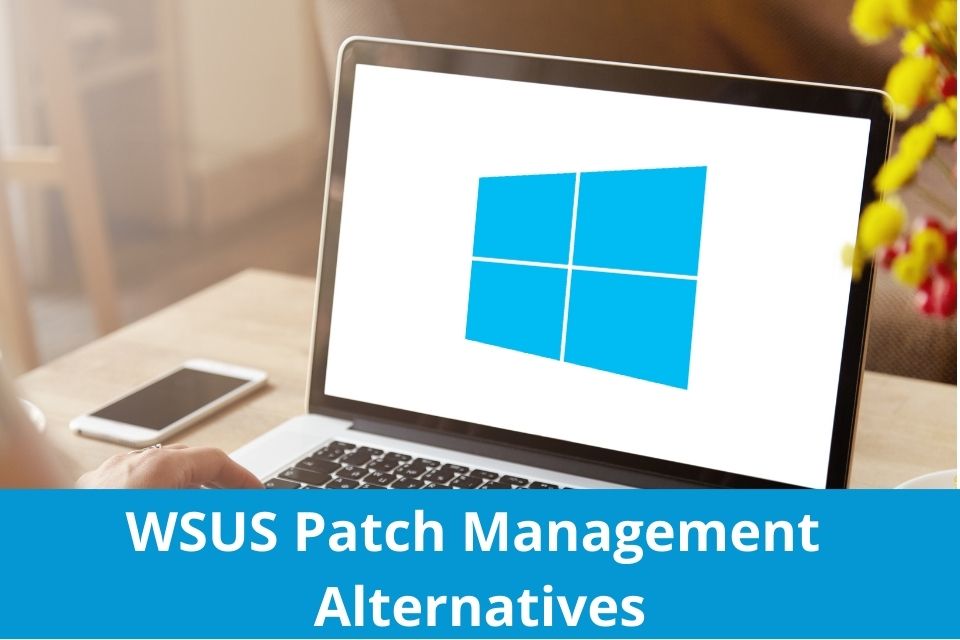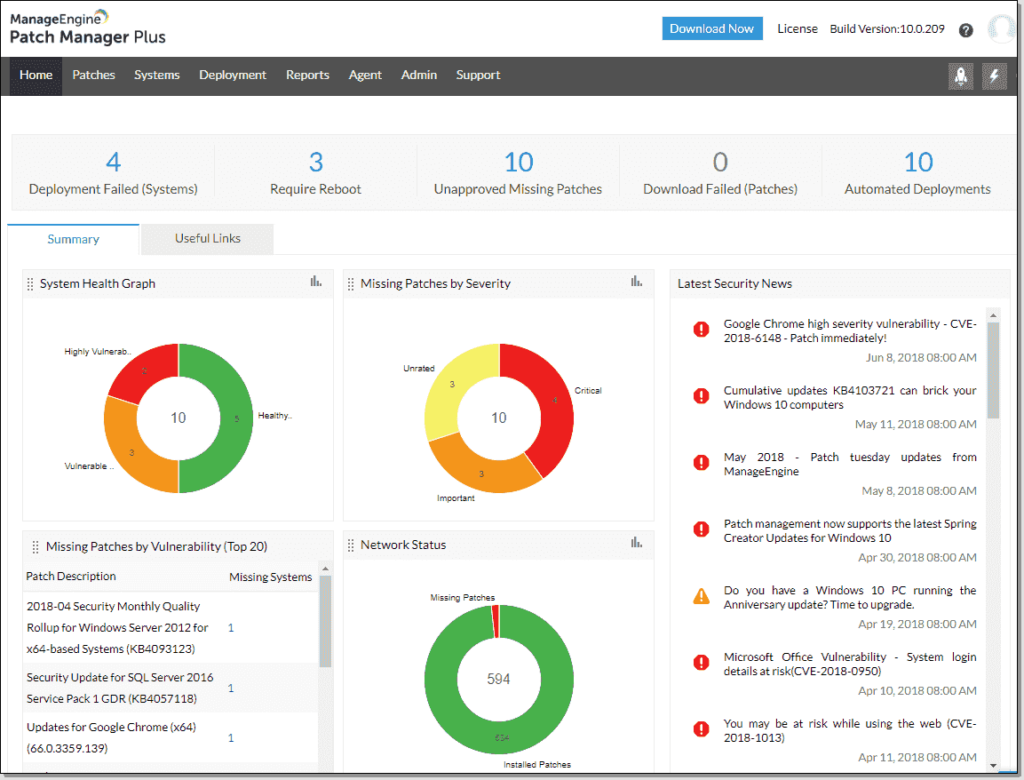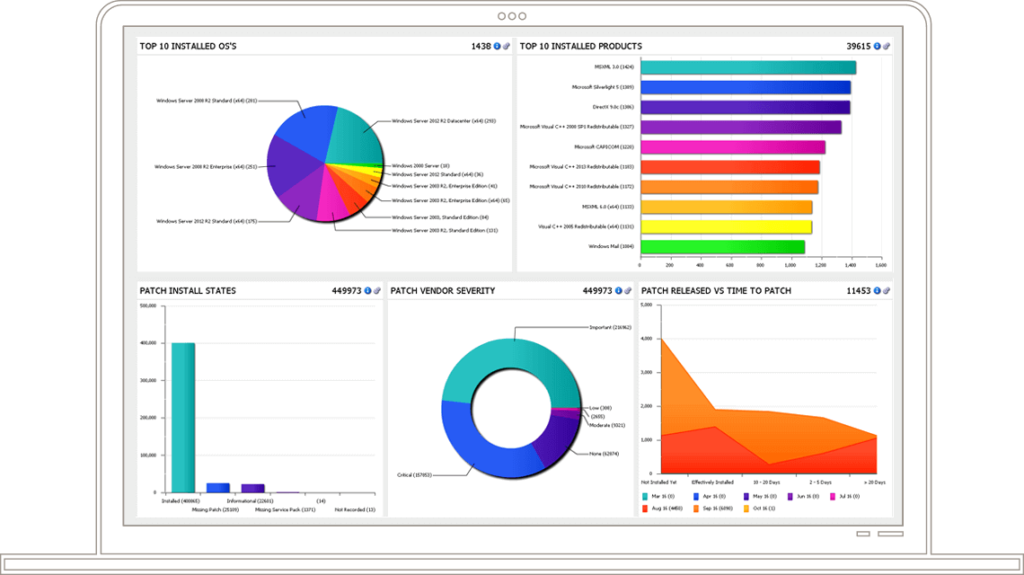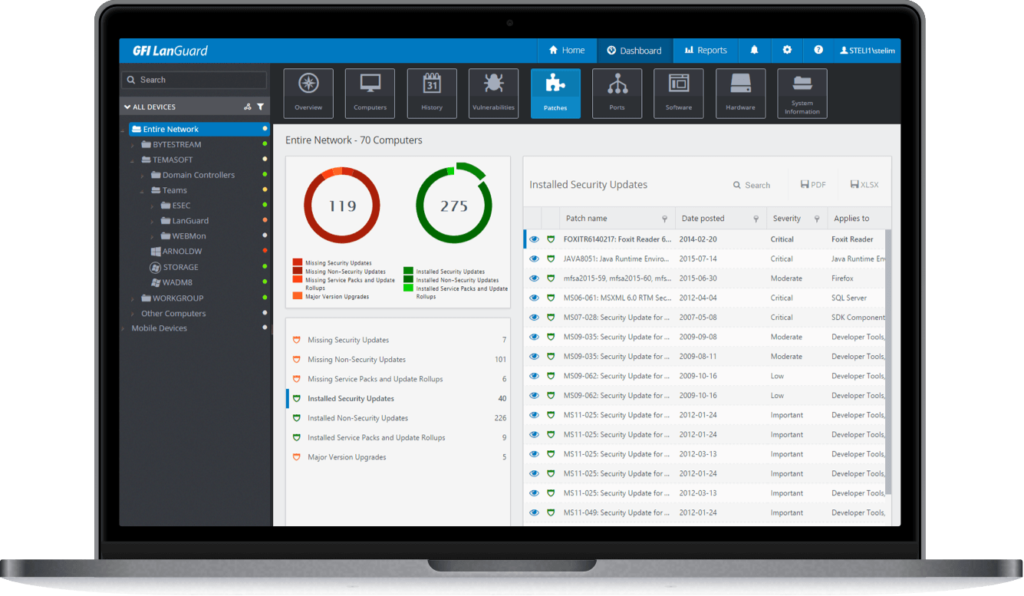WSUS Patch Management Made Easy: The Best Tools and Alternatives

Windows Server Update Services (WSUS) is a server role in Windows Server that allows IT administrators to deploy Microsoft product updates to computers on their network.
WSUS patch management is an essential task for any organization that aims to maintain the security and stability of its production environment. In this article, we will explore the benefits and drawbacks of WSUS, its alternatives, and third-party updates.
What is WSUS Patch Management?
WSUS patch management is the process of managing the distribution and installation of software updates to computers on a network using the WSUS server. WSUS enables administrators to control the deployment and maintenance of interim software releases into production environments.
With WSUS, administrators can manage the updates of Windows operating systems, Microsoft Office, and other Microsoft products.

WSUS patch management is primarily used by IT administrators and system administrators who want to control the deployment of updates across their network.
Why is WSUS patch management important?
WSUS patch management is important because it helps organizations maintain a known level of trust within their operating systems and application software, minimizing security vulnerabilities that could lead to a loss of revenue and intellectual property.
Benefits of WSUS patch management
WSUS patch management enables administrators to automate update management, maintain operational efficiency, overcome security vulnerabilities, and maintain the stability of the production environment.
How does WSUS patch management work?
WSUS patch management works by allowing administrators to manage and distribute updates through a management console.
At least one WSUS server on the network must be able to connect to Microsoft Update to get available update information.
WSUS Alternatives
Although WSUS is a popular tool for patch management, it has some limitations that can make it challenging for IT administrators. The good news is that there are several WSUS alternatives that can meet specific needs. Here are some of the top WSUS alternatives:
SolarWinds Patch Manager
SolarWinds Patch Manager is a patch management tool that allows IT administrators to automate the patching process for Microsoft and third-party applications. The tool integrates with WSUS, SCCM, and Microsoft Intune, allowing administrators to manage updates from a single console.

Pros: SolarWinds Patch Manager is easy to set up and use, with comprehensive reporting and customization features.
Cons: SolarWinds Patch Manager does not support macOS or Linux updates.
Pricing: SolarWinds Patch Manager pricing starts at $3,075 for up to 250 managed computers.
ManageEngine Patch Manager Plus
ManageEngine Patch Manager Plus is a patch management tool that provides automated patching for Windows, macOS, and Linux systems. The tool offers features such as pre-built patching templates, patch roll-back, and compliance reports.

Pros: ManageEngine Patch Manager Plus is easy to use, with support for third-party updates, custom scripts, and pre-configured policies.
Cons: ManageEngine Patch Manager Plus can be expensive for larger organizations.
Pricing: ManageEngine Patch Manager Plus pricing starts at $245 for 50 computers.
Ivanti Patch Manager Plus
Ivanti Patch Manager Plus is a patch management tool that supports Windows, macOS, and Linux operating systems. The tool provides features such as automated patch deployment, vulnerability assessment, and patch compliance reports.

Pros: Ivanti Patch Manager Plus offers a comprehensive set of patch management capabilities, including support for third-party updates, custom scripts, and pre-built patching templates.
Cons: Ivanti Patch Manager Plus can be complex to set up and configure, and may require dedicated IT staff to manage.
Pricing: Ivanti Patch Manager Plus pricing is based on the number of endpoints managed and starts at $37 per endpoint per year.
GFI LanGuard
GFI LanGuard is a patch management tool that supports Windows, macOS, and Linux systems. The tool provides features such as automated patch deployment, vulnerability assessment, and compliance reporting.

Pros: GFI LanGuard offers a comprehensive set of patch management capabilities, including support for third-party updates, custom scripts, and compliance templates.
Cons: GFI LanGuard can be difficult to set up and configure, and may require dedicated IT staff to manage.
Pricing: GFI LanGuard pricing is based on the number of endpoints managed and starts at $24 per endpoint per year.
Automox
Automox is a cloud-based patch management tool that supports Windows, macOS, and Linux systems. The tool provides features such as automated patch deployment, vulnerability assessment, and compliance reporting.

Pros: Automox offers a simple and intuitive user interface, with support for third-party updates and custom scripting.
Cons: Automox may lack some advanced patch management capabilities, such as patch rollback and compliance templates.
Pricing: Automox pricing is based on the number of endpoints managed and starts at $2.25 per endpoint per month.
BatchPatch
BatchPatch is a Windows-only patch management tool that provides features such as automated patch deployment, system reboot scheduling, and remote execution of custom scripts.

Pros: BatchPatch offers a simple and cost-effective solution for Windows patch management, with support for custom scripting and remote execution.
Cons: BatchPatch does not support macOS or Linux systems, and may lack some advanced patch management capabilities, such as vulnerability assessment and compliance reporting.
Pricing: BatchPatch pricing starts at $349 for a single license.
Pros and Cons of WSUS and WSUS Alternatives
WSUS and its alternatives have their own set of advantages and disadvantages. Here are some of the pros and cons of using WSUS and third-party patch management tools:
WSUS Pros:
- WSUS is a free tool that is easy to install and configure.
- WSUS provides a centralized console for managing Microsoft updates.
- WSUS integrates with Microsoft System Center Configuration Manager (SCCM) for even greater patch management capabilities.
WSUS Cons:
- WSUS only supports patching for Microsoft applications.
- WSUS does not provide support for third-party applications.
WSUS Alternatives Pros:
- Third-party patch management tools support patching for both Microsoft and third-party applications.
- Third-party patch management tools often offer more features and customization options than WSUS.
- Third-party patch management tools can integrate with WSUS to provide a centralized console for managing patches.
WSUS Alternatives Cons:
- Third-party patch management tools can be more expensive than WSUS.
- Third-party patch management tools can be more complex to install and configure than WSUS.
Feature Comparison Matrix of WSUS patch management (Vs) WSUS alternatives
| Feature | WSUS | ManageEngine | SolarWinds | Ivanti Patch for Windows | GFI LanGuard | Automox | ManageSoft |
|---|---|---|---|---|---|---|---|
| Deployment | ✓ | ✓ | ✓ | ✓ | ✓ | ✓ | ✓ |
| Automation | ✓ | ✓ | ✓ | ✓ | ✓ | ✓ | ✓ |
| Third-Party Patches | ✰ | ✓ | ✓ | ✓ | ✓ | ✓ | ✰ |
| Software Inventory | ✰ | ✓ | ✓ | ✓ | ✓ | ✓ | ✓ |
| Reporting | ✓ | ✓ | ✓ | ✓ | ✓ | ✓ | ✓ |
| Patch Approval Workflow | ✓ | ✓ | ✓ | ✓ | ✓ | ✓ | ✓ |
| Scheduling | ✓ | ✓ | ✓ | ✓ | ✓ | ✓ | ✓ |
| Role-based Access Control | ✓ | ✓ | ✓ | ✓ | ✓ | ✓ | ✓ |
| Cloud-Based Console | ✰ | ✰ | ✓ | ✓ | ✰ | ✓ | ✰ |
| Patch Management | ✓ | ✓ | ✓ | ✓ | ✓ | ✓ | ✓ |
| Asset Management | ✰ | ✓ | ✓ | ✓ | ✓ | ✓ | ✓ |
| Configuration Management | ✰ | ✓ | ✓ | ✓ | ✓ | ✓ | ✓ |
| Vulnerability Scanning | ✰ | ✓ | ✓ | ✓ | ✓ | ✓ | ✓ |
| Patch Compliance Reporting | ✓ | ✓ | ✓ | ✓ | ✓ | ✓ | ✓ |
| Patch Rollback | ✰ | ✰ | ✓ | ✓ | ✰ | ✓ | ✰ |
Note:
✓ indicates the feature is available and supported.
✰ indicates the feature is not available or only partially supported.
WSUS is a useful tool for managing Microsoft updates in a Windows environment, but it does have limitations when it comes to patching third-party applications. By using a third-party patch management tool that integrates with WSUS, you can expand your patch management capabilities to include third-party applications, and gain additional features and customization options.
When choosing a WSUS alternative, it’s important to consider your budget, the level of customization you require, and the complexity of the tool. With the right WSUS alternative, you can streamline your patch management process and ensure that your network is secure and up-to-date.
Other articles you might be interested in,
- Linux Patch Management Made Easy: The Top 6 Tools You Need to Know
- Top 5 Patch Management Software -Best Patch Management Tools
- The Ultimate Windows Patch Management Handbook: Best Practices & Tools
- Ivanti vs NinjaOne: Comparison of Features, Platforms, Pricing and More
- 7 Best MSP Tools for Efficiency, Security, and Efficacy
If you’re interested in promotions and advertising opportunities, please feel free to reach us at admin@thecybersecuritytimes.com or via our social media accounts.








